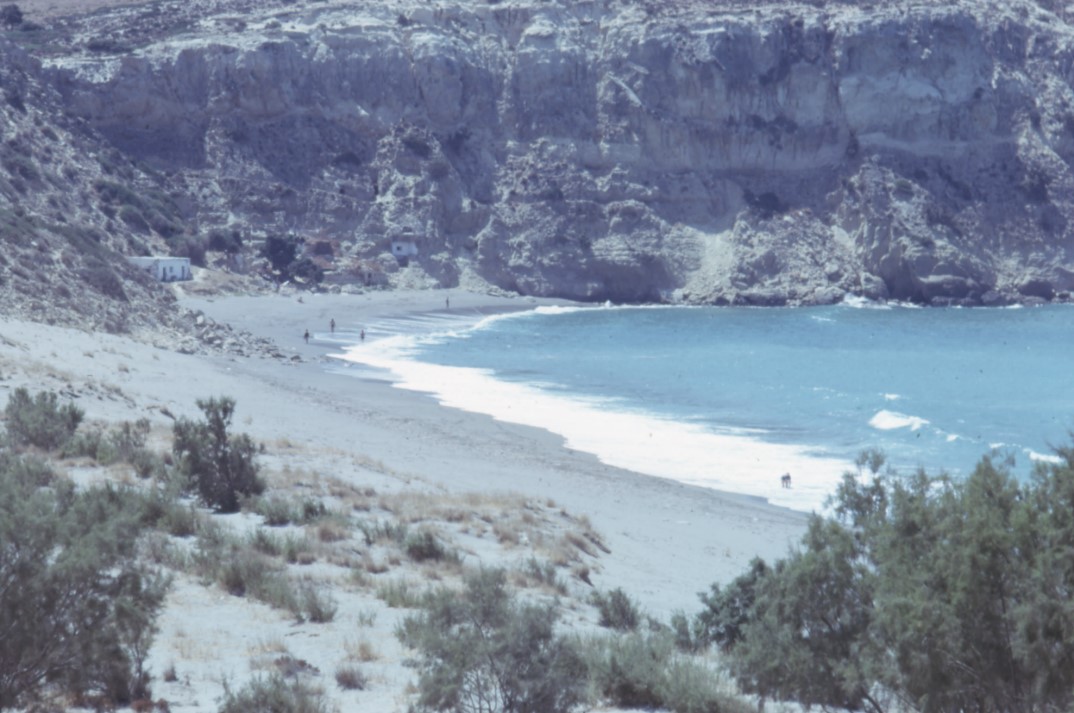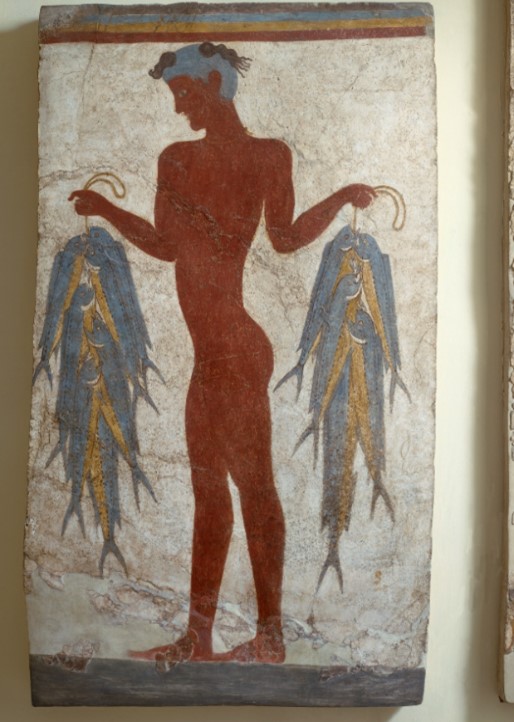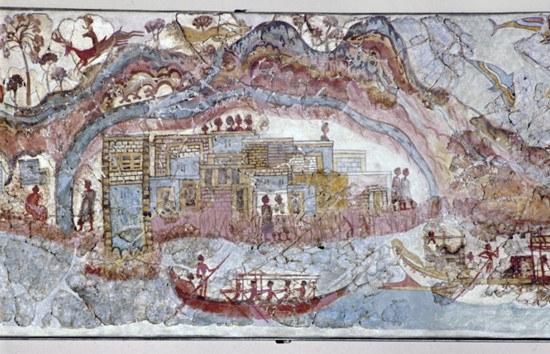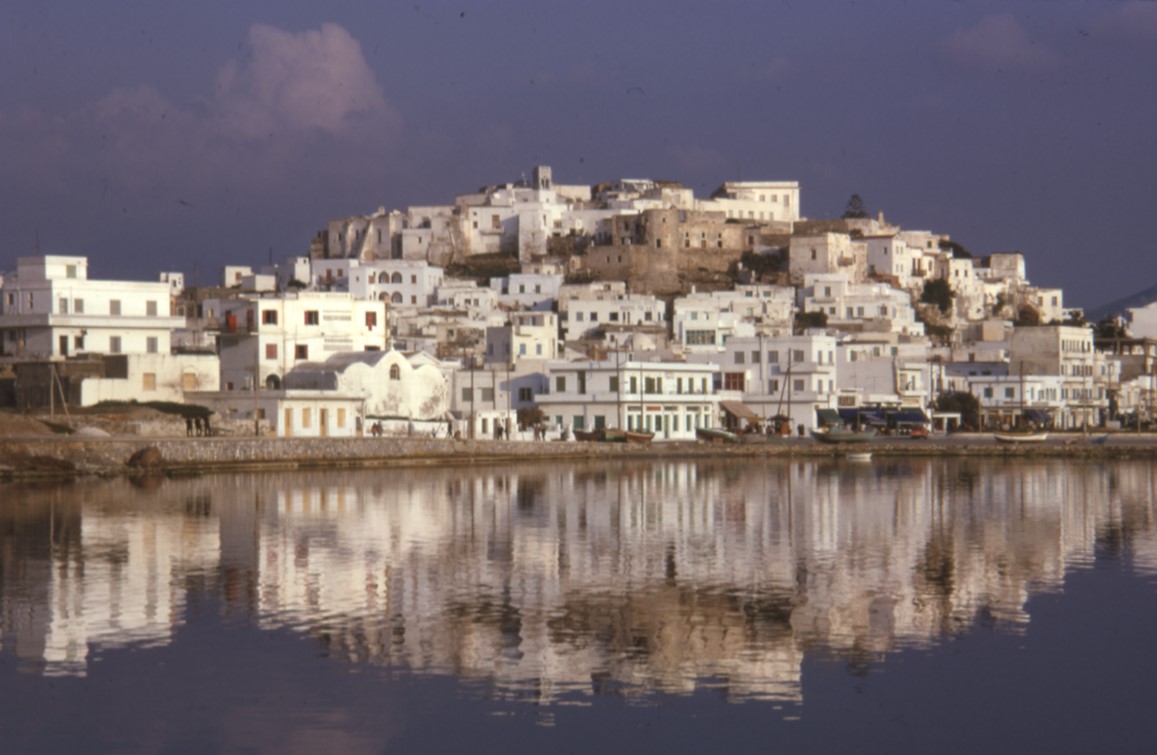Greek towns—especially those on Greek islands—are renowned for their unique appearances: they often feature bright white, cube-shaped houses with flat roofs stacked on top of one another on the side of a cliff overlooking the sea. Images of these towns are circulated by postcards and social media posts around the world, and towns like these have become synonymous with Greece. They are a selling point for the Greek tourism industry, and millions of tourists flock to these small towns on tiny islands to marvel at their quaintness and beauty. Among those captivated by the beauty of Greek towns—and Greece in general—was archaeologist Hugh Sackett, who photographed some towns while on archaeological digs on islands in the Aegean Sea, namely Crete and the Cyclades. How long, though, have these picturesque Greek towns looked like this? Why are these towns arranged like this? If their appearance is different from ancient cities on these Greek islands, what has changed over the last few millennia? In this presentation, I will use photographs taken by Hugh Sackett and discuss the appearance of these towns compared to their ancient Greek counterparts, as well as why these towns are positioned and arranged the way they are.
Setting

As shown in the image above, Greek islands often have steep cliffs on their coastlines. The geology of Greek islands could make positioning a settlement difficult. It was seemingly the desire, nevertheless, of Bronze Age Greeks to situate their towns on high ground near the sea. This meant that their homes were often “densely built on sloping ground” (Palyvou 2005, 188). Steep cliffs on the seaside often necessitated the construction of houses in a terrace-type arrangement to maximize available building space, resulting in the classic stacked appearance of Greek island towns.
The Aegean Sea was essential to the lives of most Bronze Age Greeks, especially the Minoans, who inhabited the islands surrounding the mainland. Fishing was the easiest means of supporting a large population, just as it is in Greece today, so it was natural for towns to be built along the coastline, despite its often-difficult terrain. The building of towns close to water was not unique to Minoans. Even on the mainland, for example, "relatively few Early Helladic towns are situated far inland[,] [and all six of the known fortified Early Helladic towns] are located within a stone's throw of the water" (Overbeck 1969, 1-2). The image on the right of a young fisherman showing off his bountiful catch reflects the importance of the sea to Bronze Age Greeks. This fresco was in the West House on Thera (Santorini), a large home of someone thought to be closely associated with either maritime trade or fishing, and it, along with other frescos in the house, places the emphasis on sea-related activities.

Architecture


The image above is a Bronze Age depiction of a Minoan town. In keeping with the typical arrangement of a town from the period, the town appears to be located on a slope by the water, with its houses arranged in a sort of terraced configuration. Here, the shapes of Minoan houses are clearly shown. These houses appear to all be cube-shaped and richly painted to add detail. These houses, according to architect R. W. Hutchinson, would have been largely made of mudbricks with stone foundations, or completely of stone, topped by flat roofs, with wooden, shutter-like windows which could easily be completely opened for ventilation (Hutchinson 1950, 200). According to Hutchinson, the placement of these homes would occur organically, as most towns in the Minoan world do not appear to have been planned. The houses would have often shared walls and contained no clean angles or lines, giving them a much more organic appearance (Ibid., 201). This town and the other town depicted elsewhere in this fresco fall in line with what archaeologists have discovered regarding Minoan towns and their construction.
The image above is the Minoan settlement of Gournia, which, in keeping with typical Minoan town design, features organic shapes, party walls, narrow, weaving streets between tightly-packed houses, and stone foundations. Despite the lack of defined angles in each house’s outline, all appear to be relatively rectangular in shape. The layout of Gournia, considered to be the best example that survives of a purely Minoan town (Lobell 2015, 33), gives a more detailed look into the plan of a Minoan town than the few contemporary depictions like the previous picture give. When combined, however, the two images give archaeologists a firm idea of what Minoan towns would have looked like.

It is clear to see, when comparing this image to those of ancient Minoan towns, that many towns on Greek islands bear remarkable similarities to those built over 3000 years ago. Naxos, the town shown, contains almost all the hallmarks of a Minoan town (Palyvou 2004, 211). The buildings are situated along a slope, they are terraced in arrangement, they all have flat roofs, many appear to share a wall, they all appear to be made of brick or stone, and their shapes seem arguably more organic than many modern homes: they appear to hug the hillside and follow its contours. Some of these homes even appear to have wooden shutters over their windows. The only visible difference between these houses and the ones depicted in Minoan art is the lack of colorful decorations; modern homes in the Aegean Sea are whitewashed instead of frescoed. Aside from the lack of paint details, however, the homes in Sackett’s picture are almost indistinguishable from those of the Minoans.
The most picturesque towns in the Greek islands, the towns to which everyone flocks to appreciate their beauty, quaintness, and slow pace of life, likely owe their design to the Minoans. If a Minoan man were to return to a village in the Cyclades or on the coast of Crete today, he would likely feel quite at home, perhaps eating a freshly-caught, grilled fish for dinner in a house that is nestled snugly between other houses, one which shares walls with the neighbors, one with open windows for ventilation, one with thick, less-than-straight stone walls for insulation, and one with a flat roof, just like the ones he would have built, and just like the ones many Greek villagers continue to build today.
Nathan Watson '23